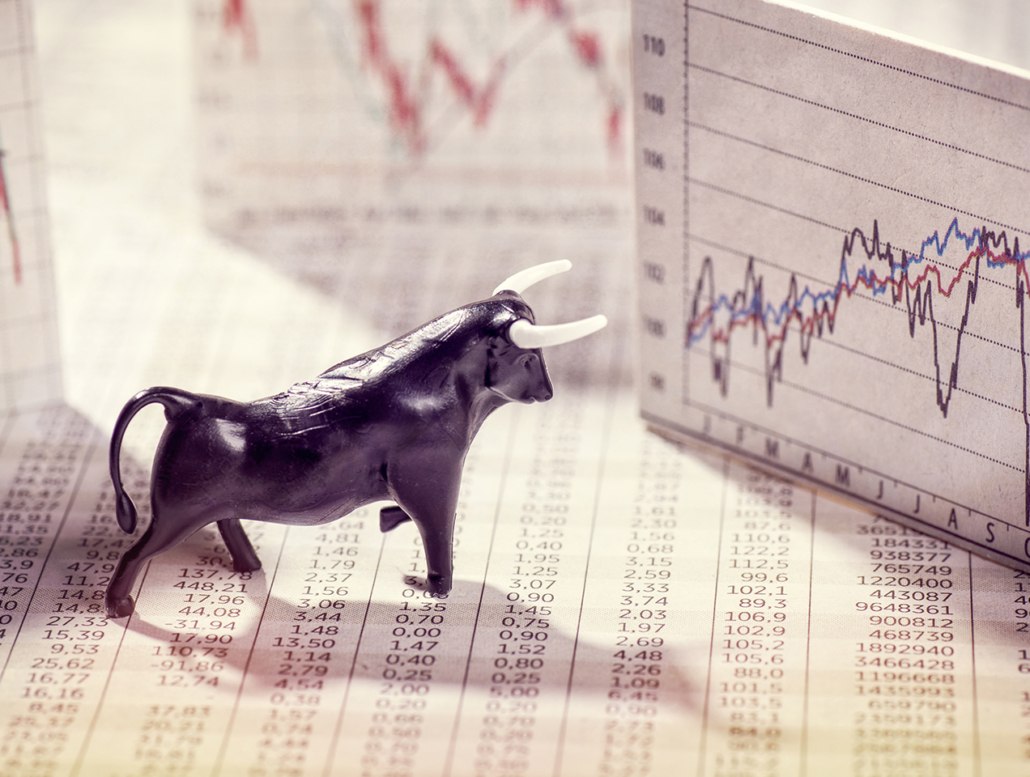The age-old small print of investing warns that “the value of investments can go both up and down” and here at UK Investor we know there’s no such thing as a 100% sure bet.
One of the main reasons behind this is volatility – a measure of how steeply the market is rising or falling over a relatively short period of time, which can make it more difficult to predict the profit or loss you will make.
Volatility is often measured using the standard deviation of the return yielded by an investment, which in turn is a statistical method to calculate how widely spread (or how ‘volatile’) the individual prices are for a series of snapshots during the time period.
It is not just the percentage by which the value has fallen or risen over the past day or week, although news articles about rapidly moving stocks will often refer to them as “volatile” in those terms too.
Whatever definition you use, volatility is to be expected in anything other than a completely fixed-return investment, as any change in value immediately creates a volatility value of something other than zero – so it’s not necessarily something to fear.
How to cope with volatility
The overall volatility of the market – from individual stocks to the entire index – provides a useful rule of thumb indication of how much the value of the market is in flux.
Although greater volatility can make things harder to predict, it can also be a sign of short-term opportunity, as a more volatile market implies that at least some stocks are gaining value rapidly (unless the market is crashing).
For long-term investment strategies, higher volatility can be a good reason to hold on to existing investments, rather than risk selling in a volatile cycle where individual stocks may be substantially undervalued.
Because of this, for amateurs and professionals alike, it can sometimes be useful to resist the urge to sell up at the first sign of a spike in volatility, and instead plan to ride out the cycle until prices return to their long-term averages.
How to spot a volatile market
It’s usually quite easy to notice a volatile market even without calculating its standard deviation, by looking for some of the hallmark characteristics:
- Larger volumes of trading across the market.
- Trading biased towards either buying or selling.
- Wider and faster changes in prices of stock.
You may even be able to anticipate the onset of a volatile market by keeping aware of major financial reports from the biggest brand names on the market, as well as government reports that may introduce uncertainty into the market.
Sometimes though, the market just becomes unstable as a consequence of lots of individual trades all adding up to an unexpected shift in a particular stock.
Whether this is by coincidence or represents a collective change in sentiment among investors, it can trigger a spike in volatility with very little warning – making it very difficult in some cases to predict when volatility is going to increase for a specific stock or market.
Buying in a volatile market
Volatility by definition adds to the uncertainty of buying stocks, shares and other investments, so your investment strategy for a volatile market should take this into account.
You may want to be more careful about the level of risk you are willing to take on, or the amount of your total investment fund you place in a specific volatile stock; you might want to wait until the volatility level falls before you buy anything at all.
If, however, you see a company with strong long-term potential whose stock price has become undervalued due to volatility in the market, it may be a good opportunity to pick up some extra shares that will offer greater returns over the medium to long term.
Remember that volatility is often triggered by higher total levels of trading. This can lead to some delays as the backlog of instructions is cleared – and in a market where valuations are changing rapidly, that can affect the price you pay when your trade goes through.
In extremely busy periods, online trading platforms may load slowly, spottily or not at all, so if you want to capitalise on volatility, make sure you have an alternative way to execute trades, for example by telephone.
Ways to mitigate a volatile market
Limit orders, as their name suggests, are a way to limit your risk during a volatile market. For example, if a particular stock is at a good price but is not quite tempting enough, you may want to place a limit order on it.
A limit order is an order to buy/sell a certain number of shares, but only when they reach a specific price (or exceed it).
This means in a fast-moving market, if that value is achieved, you are less likely to miss out, but you also avoid selling shares while they are undervalued or at a loss.
Other than that, as suggested above, the best ways to mitigate a volatile market may be simply to keep out of it by holding on to your investments for the long term and not making any new purchases during high volatility.
Investing always carries an element of risk – and this can often translate into a higher rate of reward – but by keeping an eye on the volatility of markets, you can help to decide when the risk level is just too high to take the chance.
https://www.investopedia.com/articles/02/051502.asp
Disclaimer: The information provided here is not investment, tax or financial advice. You should consult with a licensed professional for advice concerning your specific situation.




